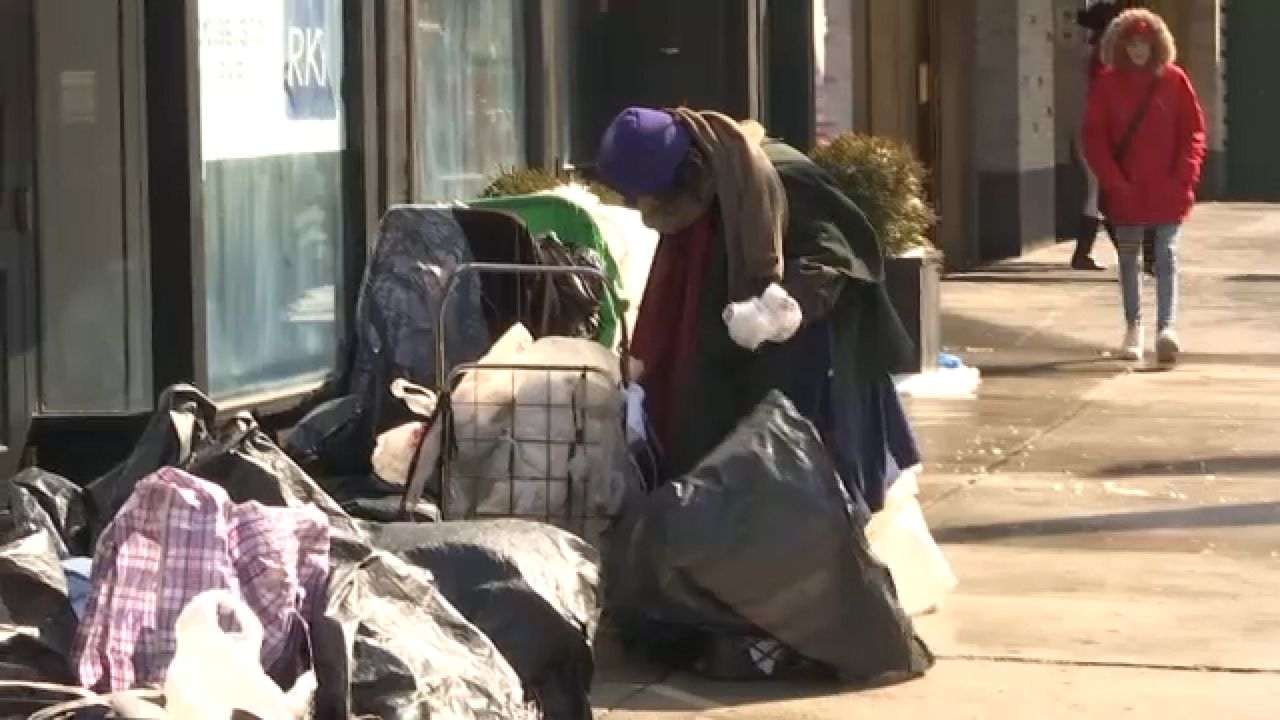People living on the streets of our city is a reality that thousands of New Yorkers face, including thousands of children and the elderly, and especially affecting the Latino population.
Tania Zapata says:
“We have too many people arriving, ourselves, many people do not have jobs, in reality the situation is difficult.”
Homeless people can be seen on various streets in the city, even in train stations and other public spaces.
Since October 10, 2010, World Homeless People’s Day has been celebrated, a date that aims to raise awareness among the population about people who do not have a home to live in or who live in housing in inhumane conditions. and unhealthy conditions in various parts of the world and the discrimination they suffer due to their condition.
There is no exact figure for how many are literally homeless, however, the Coalition for the Homeless registers more than 84,000 people in the New York shelter system, of which 27,000 are children.
On October 10, International Homeless Day is observed and the problem only increases in the five boroughs of the city, since according to the aforementioned coalition, the number of New Yorkers who sleep each night in shelters is now 66 percent. percent higher than 10 years ago.
This social phenomenon is known as homelessness, related to people who lack housing to reside in, being forced to live outdoors or in shelters due to a breakdown in their family and social ties, as well as not having a job. with fixed or stable income.
Causes include lack of employment, domestic violence, and inability to pay rent.
“It has to affect it because it is a, a quarter is worth $250, plus whatever is added,” says Mannuel.
Statistics show that 56% of those affected are African-American and 32% are Latino, compared to 7% of the white population.
Studies also reveal that single people without stable housing are more likely to have serious mental illnesses or drug addiction problems.
We spoke with a street vendor, a teacher and a mother who observe the problem every day:
“Sometimes they don’t let themselves be helped even though I have also wanted to help people like that, but it’s not possible,” says ‘Angela Flores, street vendor.
Brenda Díaz, primary school teacher, explains:
I have seen that many children live in shelters and it is sad because many sometimes miss school, because of the situation in which the family finds itself.
And the teacher adds about recently arrived migrants:
“The majority come to school early, but it is very difficult for them because they have to have a Metrocard, their parents have to come, they have just arrived and they don’t know the language,” he says.
On the other hand, there are no exact statistics on the number of people who literally live on the streets, sleep on the public transportation system, or take refuge in other spaces in the city.
However, it is estimated that there are thousands between the five counties.
“Well, I can’t understand how in such a rich city, rents are so expensive. The owners have no voice, the politicians say they are going to help them, and I have seen so many that I have kicked them out of their apartment. If they are immigrants, they scare them and “They are scared to see if they leave, because they don’t know that they have rights. It’s an unfair thing, unfair because how are they going to build an apartment and charge 3,000 pesos to a person who doesn’t even earn a hundred,” says a New Yorker.
If you need help or know someone who requires assistance, you can contact the Coalition for the Homeless at 212-776-2000.
2023-10-10 15:58:00
#World #Homeless #Day
